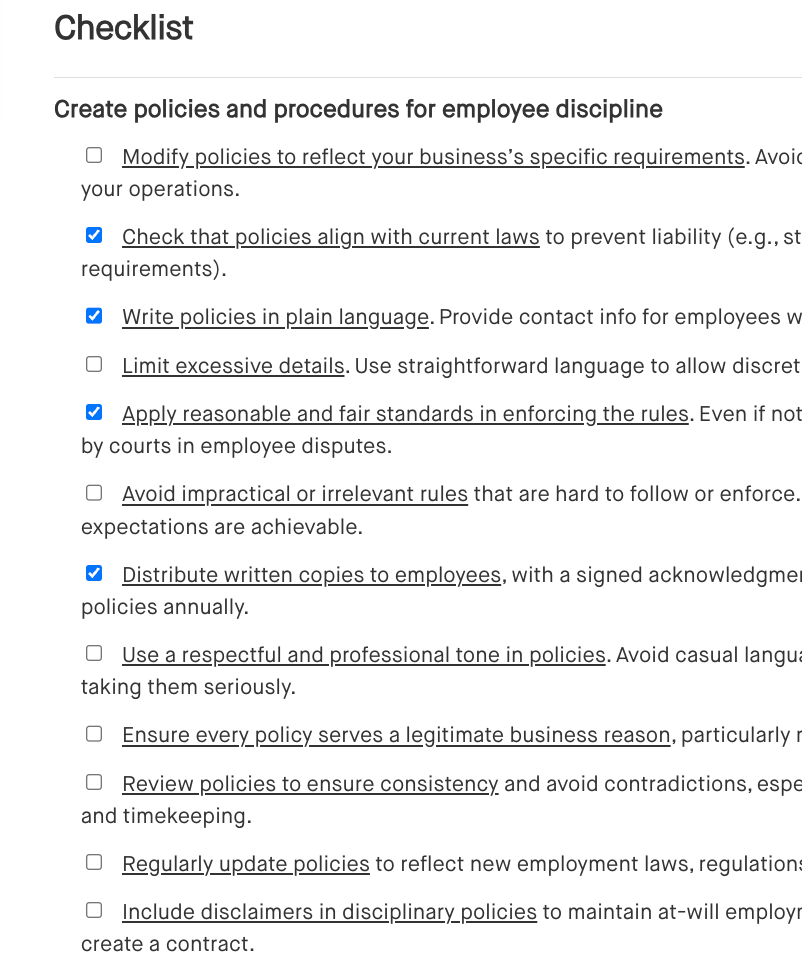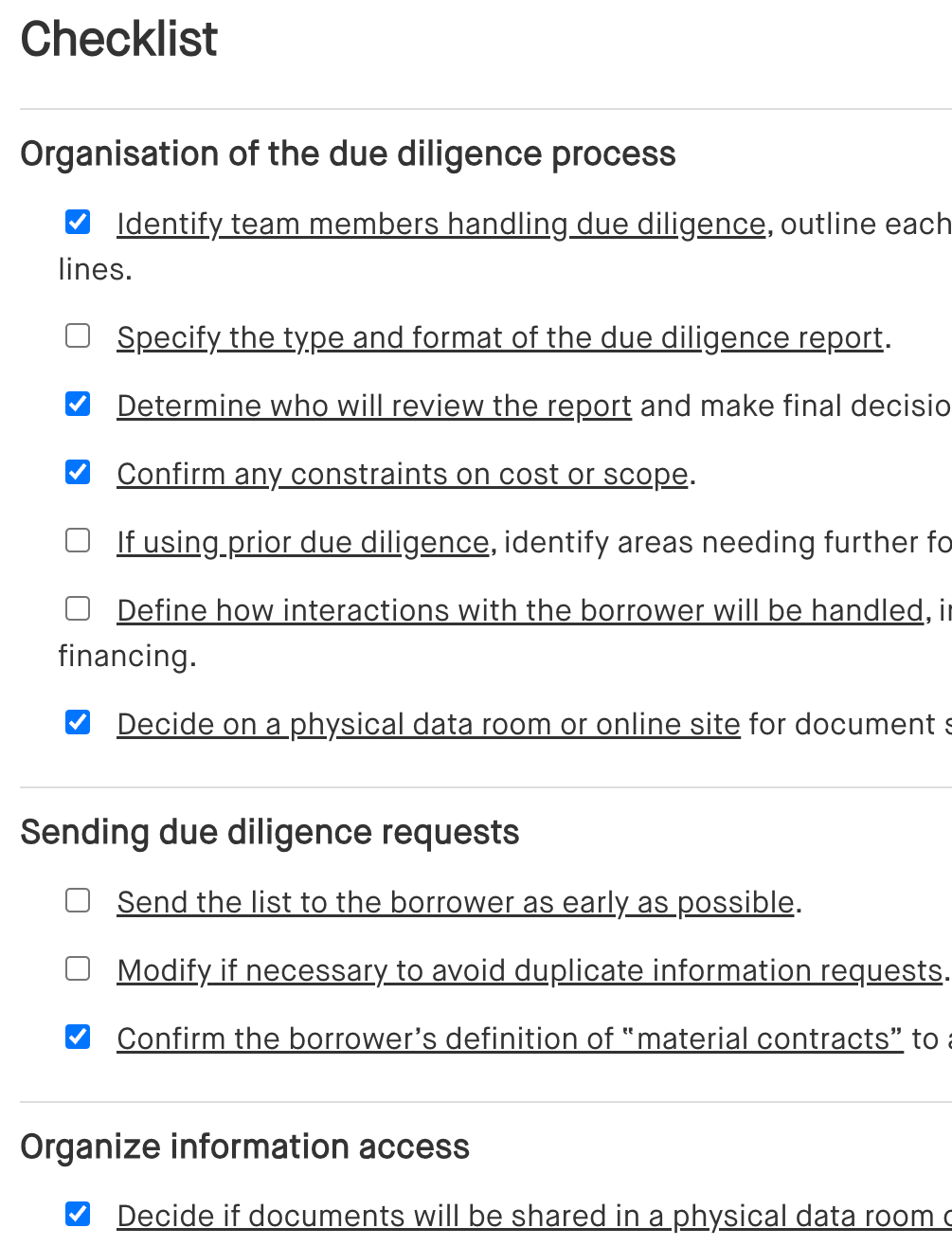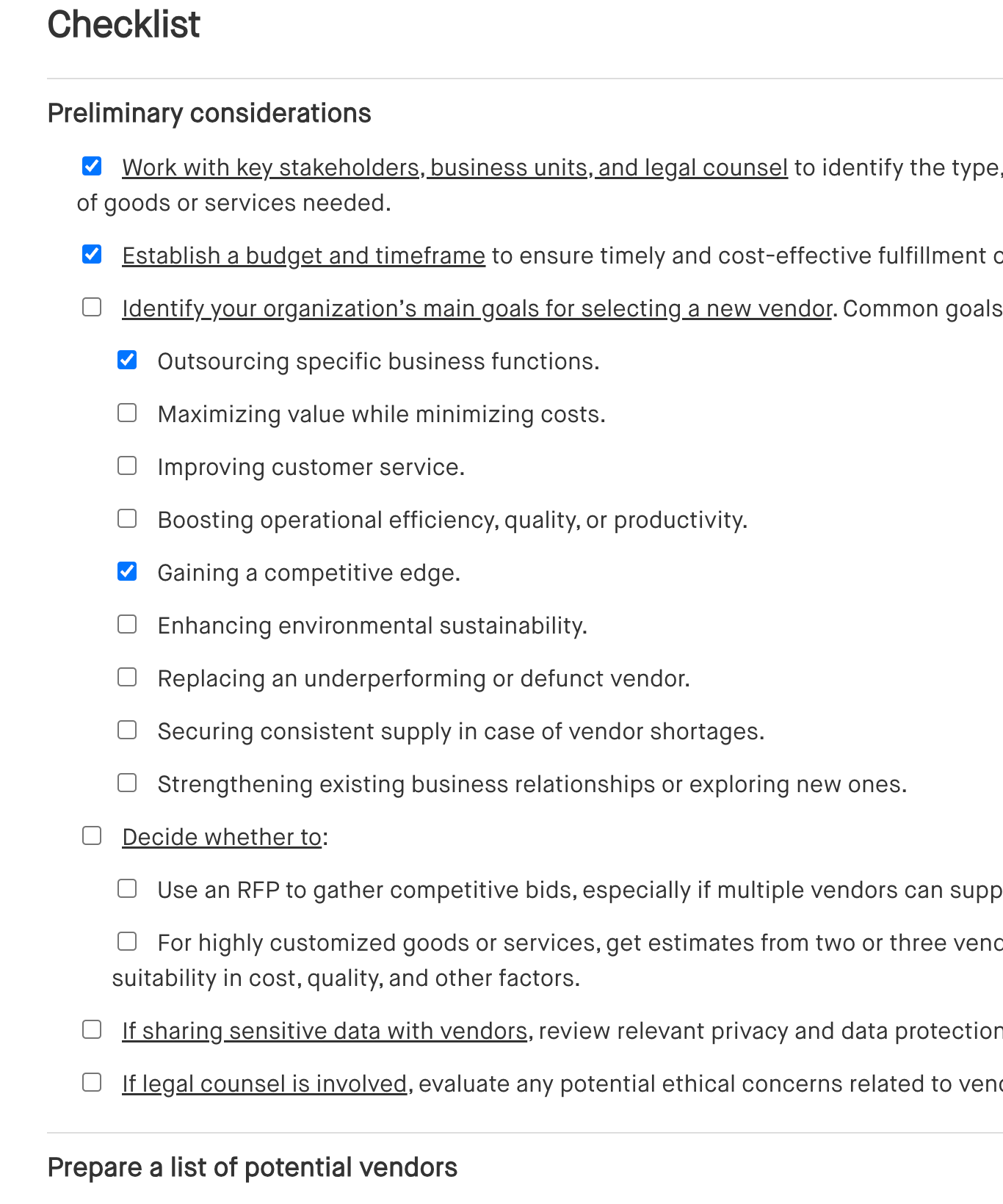Dealing with a non-compete or non-solicitation violation checklist: Free template
Dealing with a non-compete or non-solicitation violation checklist
This checklist provides a structured approach for handling potential violations of non-compete or non-solicitation agreements by former or current employees. It walks you through reviewing the agreements, investigating the facts, and determining appropriate legal action to protect your business.
By using this checklist, you can ensure compliance with state laws, reduce potential damage to your business, and take the necessary steps to enforce your rights.
How to use this checklist
Here’s how to use the checklist to effectively handle potential non-compete or non-solicitation violations:
- Step-by-step guide: Start by reviewing the signed agreements with the employee, including employment contracts, stand-alone non-compete/non-solicit agreements, and any other related documents. Verify if the employee's actions fall within the restricted geographical area or timeframe, and whether the specific conduct is prohibited by the agreement.
- Tailor to your situation: Customize the checklist based on the state laws governing your agreements. Some states have stricter requirements for enforcing non-competes, while others may not enforce them at all for certain categories of workers (e.g., low-wage employees). Make sure to adjust your approach according to the state jurisdiction of the employee.
- Investigate employee actions: Conduct a thorough investigation into the suspected violation. This includes reviewing the employee’s electronic communications, documents they may have accessed, and any confidential information they may have misused. If the employee has moved to a competitor, consider whether they have solicited your clients or recruited other employees.
- Involve the right teams: Engage your legal and HR teams early to ensure that you comply with relevant laws and internal policies. The legal team can guide you on enforceability and whether to pursue informal actions (like a cease and desist letter) or formal legal action (such as filing for an injunction).
- Document everything: Maintain records of all relevant actions taken, including investigations, interviews, and communications with the employee. If you need to escalate to court action, having a well-documented trail will help demonstrate your case and show that you took reasonable steps to resolve the issue informally.
- Regularly update: Laws and regulations regarding non-compete and non-solicitation agreements evolve frequently. Ensure your policies and agreements are regularly reviewed and updated to stay compliant with changing legal standards.
Checklist
Benefits of a dealing with a non-compete or non-solicitation violation checklist
Using a non-compete or non-solicitation violation checklist offers several advantages for businesses dealing with potential breaches of restrictive covenants. Here’s how it benefits you:
- Ensures compliance: By following a structured checklist, you can make sure your actions are aligned with state-specific laws and regulatory guidelines, reducing the risk of legal missteps.
- Protects business interests: A checklist helps you efficiently assess violations and take swift action to safeguard your business from potential harm, such as client poaching or misuse of confidential information.
- Streamlines the investigation process: With clear steps outlined, the checklist simplifies the process of investigating employee activities, making it easier to gather relevant evidence and identify any breaches.
- Reduces costly legal action: The checklist helps you evaluate informal legal steps, such as cease and desist letters, before escalating the issue to court, potentially saving time and legal expenses.
- Improves enforceability: Regularly using this checklist helps you monitor and update your restrictive covenants, ensuring they remain enforceable and compliant with evolving legal standards.
Frequently asked questions (FAQs)
Q: What should I do if an employee violates a non-compete or non-solicit agreement?
A: Start by reviewing the signed agreement and determining if the employee’s actions violate any of its terms. Investigate their activities thoroughly and consider sending a cease and desist letter before pursuing formal legal action.
Q: Are non-compete agreements enforceable in every state?
A: No, the enforceability of non-competes varies by state. For example, non-compete agreements are generally void in California, while states like Massachusetts require certain statutory conditions to be met. Always check local laws before enforcing these agreements.
Q: Can I stop severance payments if an employee violates a non-compete agreement?
A: In some cases, you may be able to stop severance or other benefits if the employee is in breach of their agreement. However, make sure this is allowed under the terms of the severance agreement to avoid breaching it.
Q: What if my employee takes confidential information but hasn’t violated a non-compete?
A: Even if the non-compete isn’t enforceable or violated, you may still have claims for breach of confidentiality or trade secret misappropriation. Investigate their activities to determine if proprietary information has been taken and consider legal action under the Defend Trade Secrets Act (DTSA).
Q: How can I prevent future violations of non-compete or non-solicitation agreements?
A: Regularly review and update your non-compete policies to ensure they comply with state laws. Consistently enforce these agreements, remind employees of their obligations upon departure, and take steps to safeguard confidential information.
This article contains general legal information and does not contain legal advice. Cobrief is not a law firm or a substitute for an attorney or law firm. The law is complex and changes often. For legal advice, please ask a lawyer.


